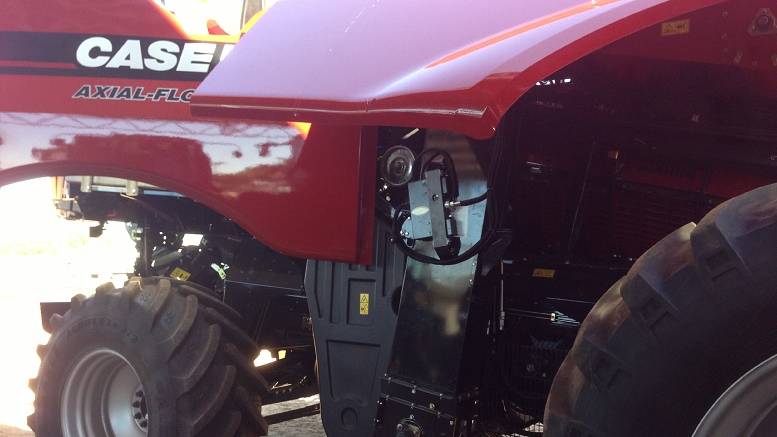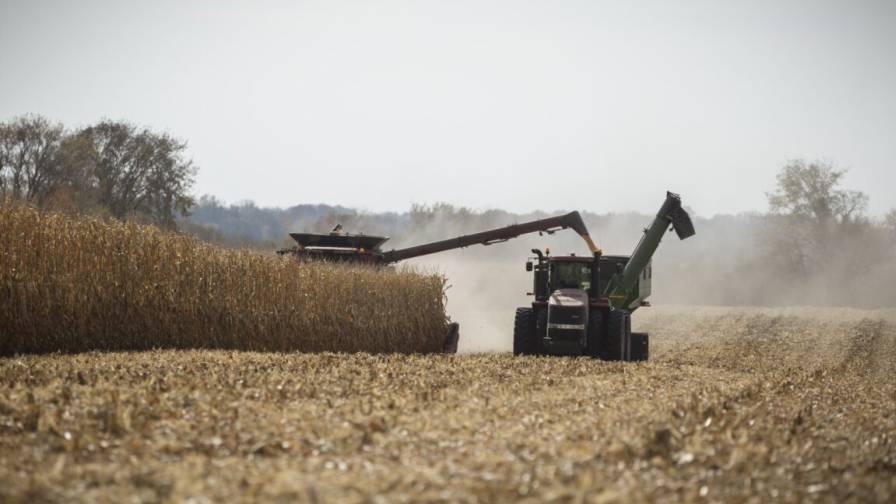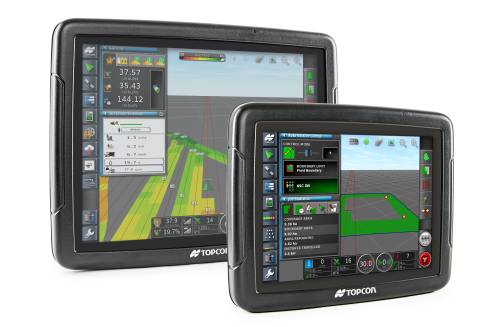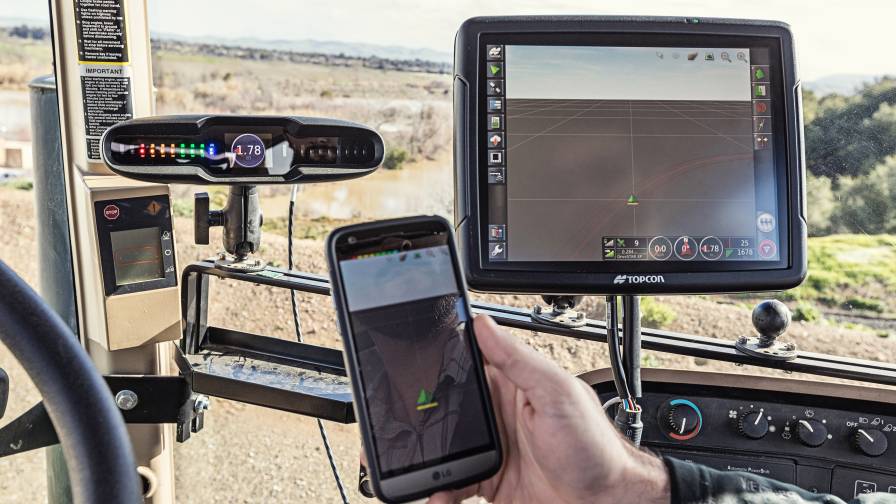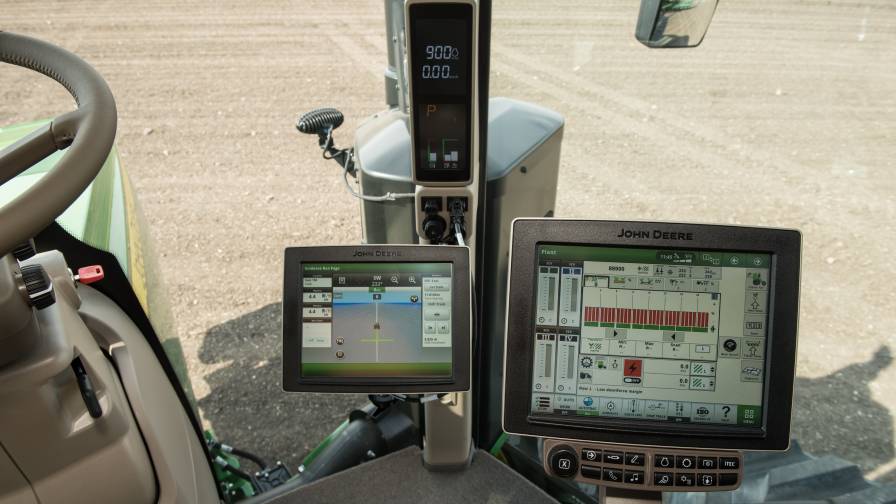Precision Agriculture: Making Cab Displays Do the Jobs at Hand
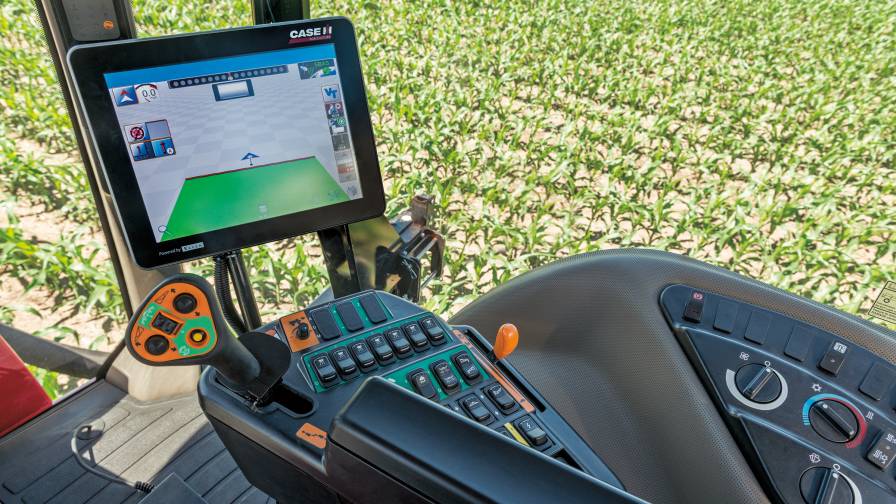
An in-cab display shown in a Case IH Patriot sprayer.
A display can never do too much. That’s the opinion of Jeff Dickens, Product Sales Specialist with Ag Leader — and it reflects the thinking of many precision ag companies as they strive to provide the most comprehensive technologies in the cab.
A caveat here, though: Advanced capabilities are defined by a particular user.
In the case of producers, the real question is “does it do what the grower wants it to do?” says Dickens. For instance, Ag Leader displays can do anything from planting to harvest to tiling and several things in-between. “While some growers take advantage of all the features, others might only be utilizing a quarter of them,” says Dickens. “It’s not that the grower doesn’t need them, it’s that they haven’t made that step to utilize the display to its full potential.”
Issues Still Looming
Cab displays are not only a method of product control, but also an integral part of tasks such as individual nozzle on/off control, autoguidance control, monitoring and adjusting boom height control, points out Mark Burns, Application Equipment Marketing Manager at Case IH. As proof of their evolution, displays are now designed into the architecture of the vehicle, rather than tied solely to the application product.
AFS Pro 700 or Viper 4+ displays are factory installed in Case IH equipment, but their open architecture ensures compatibility with other manufacturers’ equipment and precision systems.
Flexibility is key, says Ryan Molitor, Director of Customer Experience at Raven. For instance, the company’s Viper 4+ can do as much or as little as needed. A user can customize the interface and profiles to only see what is relevant to the application. As he moves between machines or applications, the screen can be tailored for each.
Growers gain basic competency within a few weeks of the running displays, but once they become confident in their ability, they will begin investigating more advanced functions, including the ability to customize the control console to fit their preferences, Mike Gomes, Vice President, Strategic Initiatives with Topcon Precision Agriculture, has often found. The goal: to be able to make a number of adjustments with just a single touch of the right features, to minimize confusion and keep their equipment operating smoothly and most efficiently with minimal downtime.
T.J. Schulte, Marketing Manager for Trimble’s Agriculture Division, expects to see more of that display customization in the industry. Trimble is continuing to add apps to its Ag App Central marketplace — introduced last year — for its Android-based TMX-2050 display. The choices will enable users to better customize their display to fit their local needs.
Right-Sized Monitors
“We also expect to see the industry move toward more flexibility in the size of display in the cab as well as the types of devices running the software,” Schulte adds. Trimble’s TMX-2050 has a 12.1-inch screen, while its CFX-750 has an 8-inch.
Topcon Agriculture is all about offering different-sized displays. Its X family of consoles has screen sizes of 4.3-inch, 8-inch and 12.1-inch. The smallest screen, the X14, doesn’t include the ability to have multiple mini-views, because 4.3 inches simply isn’t enough area to provide the operator the feedback he needs, explains Gomes. “That is why we offer the X25 at 8 inches and the X35 at 12.1 inches. They all use our same Horizon software, so there is no time spent ‘relearning’ system functionality, simply providing operators more detail and configurability as the screen size increases.
“Operators who spend an extended amount of time in the cab appreciate the larger screen size of the X35 console and frequently utilize three or more mini-views so any adjustment is a single touch away,” he says.
Questions about compatibility in a number of areas may make buyers reluctant to purchase new displays.
For instance, software compatibility can be a frustration for customers, says Raven’s Molitor. “Users don’t necessarily want to switch their fleet management, variable rate, or other software in order to utilize the display. We try to increase compatibility with a variety of software technologies through our Slingshot API platform.”
Raven also gets a lot of questions about hardware compatibility, he says, “which is why we continue to invest in ISOBUS technologies to give our customers even more flexibility with what they can do.”
Another area of concern is complexity. Display functions can be overwhelming if companies throw too much at users at once. To help, Raven is starting to integrate more setup and help guides into its displays and other technologies.
Burns from Case IH believes that the newest displays may seem sophisticated and overwhelming to some, but in reality they are very intuitive and have a relatively short learning curve.
In some scenarios, the understanding of what a display can offer the grower is the deterrent to adoption. Many times, growers don’t think they are big enough for the technology, explains Ag Leader’s Dickens. But conversations can show them the benefits, from guidance to steering to yield mapping.
Case in point: Displays are part of technologies that have offered significant localized yield improvement and improved overall efficiency of producing a crop, says Tim Stuenkel, Global Marketing Communications Manager with TeeJet Technologies. “Systems like our Sentry 6140 tip flow monitors can immediately detect flow issues, that the operator would never detect otherwise, on planters and fertilizer toolbars to prevent misapplication of nutrients,” he notes.
Stuenkel does add a word of caution on display capabilities: “Bombarding the operator with too many features — or features with limited benefit — can be problematic. Adding in lots of functions that are rarely, if ever, used tends to over-complicate menus, may bury some of the key functions, and can create a less positive user experience.”
New Offerings
Console users have a lot of new products and updates to choose from this year. Ag Leader recently introduced a new line of InCommand displays which improve real-time decision-making thanks to features such as enhanced mapping with row-by-row detail and split screen view, allowing users to identify machine control and agronomic issues easier and sooner.
Just last fall, the company released DisplayCast, a new feature which uses the Internet to allow InCommand displays to talk to each other (near or far), sharing all configurations, grower/farm/field, products, coverage maps for swath control, guidance lines, field summary information, planting maps for variety tracking and more.
Raven’s Viper 4+ can have a variety of ISOBUS technologies hooked up to it, the latest of which is the company’s new Rate Control Module, the Hawkeye Nozzle Control System and Sidekick Pro Direct injection. This makes the display compatible with not only Raven proprietary products, but other ISO technologies.
Topcon has updated the hardware on its newest console, the X35, while maintaining many of the valued features offered in its Topcon Horizon software — such as configurable dashboards and the very popular mini-views, says Gomes.
The company has also added a new feature called Horizon XTEND, which allows the user to utilize tablets or smart phones as an “extension” of the Horizon software via Wi-Fi connectivity. Users can have an additional mini-view on the retail device in the cab, or leave the cab with their smart device, all the time maintaining the ability to operate the control console, as if they were in the cab. “This means that a single operator can perform calibrations or catch tests at the business end of the machine with the confidence of having their hands reliably on the controls as if they were in the cab,” explains Gomes.
Deere has introduced its Gen 4 Extended Monitor for users who want an additional in-cab display to more conveniently oversee their operations with two monitors. It eliminates the potential for mismatched totals or data on two different display operating systems.
This approach is ideal for customers wanting to monitor any number of machine, implement and precision ag functions such as planting or product application. In addition, operators can easily move pages and display functions from one display to another.
“We designed the Gen 4 Extended Monitor to be an easy-to-install and easily customizable solution that provides increased flexibility for customers who want a second display as part of their in-cab office setup,” says John Mishler, Production and Precision Ag Marketing Manager for John Deere.
The Gen 4 Extended Monitor is designed to work exclusively with the 4600 CommandCenter.

